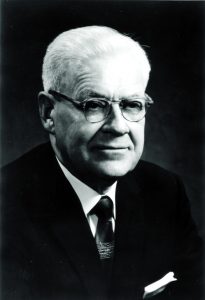
Christened Einar1 Norman, E. Norman Rauland (1898-1975) was the oldest child of Jergen and Augusta Matilda Andersen. In accordance with Scandinavian naming patterns, his last name was derived from his father’s first name; hence he initially became E. Norman Jergensen (Jergen’s son). How his last name became “Rauland” will be covered later, but a hint might be revealed in the following: He was born in the picturesque, mountainous Telemark region of south-central Norway, where the family resided in the small village of Rauland.
The family migrated to the United States when Norman was still quite young. Almost 70 years later, he was to tell an interviewer about his recollections of crossing the stormy Atlantic: “A violent storm came up suddenly, and the crew of the freighter [on which he and his family were passengers] was unable to cope. A rupture in the hull at the water line forced the ship’s crew to throw cargo and personal belongings off the ship in order to stay afloat.” He further related, “Even today, I can still see the cargo and wooden crates bobbing up and down on the crest of the waves. We did survive a watery grave and, after drifting for several weeks, while we were being given up as lost by those waiting in America, we landed on the Azores Islands, whereupon we were accepted as refugees and spent about a week there before being picked up by a German ship that brought us on to the States.”2
Rauland often commented that this episode was, at least in part, what sowed the seed of his self-determination, inasmuch as it made him realize that whatever success he would have in life would be of his own making.
Rauland, as was the case with so many early innovators discussed in this series on Industry Pioneers, became enamored with what was then the “newfangled” science of wireless radio.
After their harrowing experience at sea, the young family landed on Michigan’s southern peninsula at Traverse City, where Rauland’s father Jergen resumed his trade as a carpenter. The year was 1903. When work in that region grew scarce, the family moved farther West and took up residence in Chicago.
Rauland’s siblings included younger sisters Ingrid and Swanhilde, and two brothers and a sister (Sigrid) who were born after the family arrived in the US. All were duly enrolled in Chicago public schools. Apparently, the family prospered in Chicago inasmuch as the children all received proper educations, and Rauland was able to go on to attend John Marshall Law School.
Early Interest In Wireless
According to an article in the in-house publication of the Rauland Division of the Zenith Corporation, Rauland EMITTER,3 Norman Rauland, as was the case with so many early innovators discussed in this series on Industry Pioneers, became enamored with what was then the “newfangled” science of wireless radio. According to the story, “During his early teens, Norm worked during the summer as an office boy in the Chicago Loop and, as chance would have it, his attention was drawn to a window display in an Army surplus store at the corner of Monroe Street and Wabash Avenue.”4
One of the objects on display was a contraption made largely of beautiful, polished brass with an accompanying tag that said simply, “Wireless.” Intrigued, Rauland entered the store to inquire about the object; he was told it was a Telefunken German wireless set that the US military had attempted to use to transmit messages during the Spanish-American War. Young Norman’s meager salary precluded him from becoming the owner of this piece of apparatus, but it did whet his curiosity enough to send him to the library to seek out additional information about the subject of “wireless.”
By studying what little information there was available on the subject, Rauland was able to cobble together a radio set using a spark coil from a Ford ignition system for his transmitter and galena crystals for his detector. Using the call letters “AY,” he went on the air as one of America’s early radio amateurs. The year was 1912.
World War I Years
In 1917, the US entered the European war on the side of the British and the French. According to the Rauland family history,5 even though he lacked only a scant six months before he would be eligible to be graduated from law school, Norman Rauland decided to join the Army.
Though he lacked only a scant six months before he would be eligible to be graduated from law school, Norman Rauland decided to join the Army. He wound up in France attached to the US Signal Corps.
It was then that the Scandinavian tradition that had decreed that his last name be Jergensen became an issue. The recruiting officials, for whatever reason, questioned why Norman’s last name differed from that of his father and sister. Norman’s sister was named Ingrid Anderson (she had thus adopted the American custom of taking the same last name as her father’s, “Andersen,” and further Americanized it to “Anderson”). This obviously perplexed the US authorities to such a degree that Norman’s application to serve in the Army was rejected.
A family conference was convened to discuss the issue. Inasmuch as one’s last name was not paternally hereditary, many Norwegians adopted the convention of calling themselves by their first name followed by the name of the farm or town from whence they resided. Therefore, if Norman’s father was named Jergen Andersen, Norman would go by the last name of Andersen-Rauland.6, 7 The family conference ended with the conclusion that, thereafter, they would adhere to the Anglo-Saxon tradition that was the vogue in the US, and uniformly use the family name Rauland. Thusly armed with a last name that didn’t confuse the military authorities, he reapplied for service in the Army and was duly commissioned.
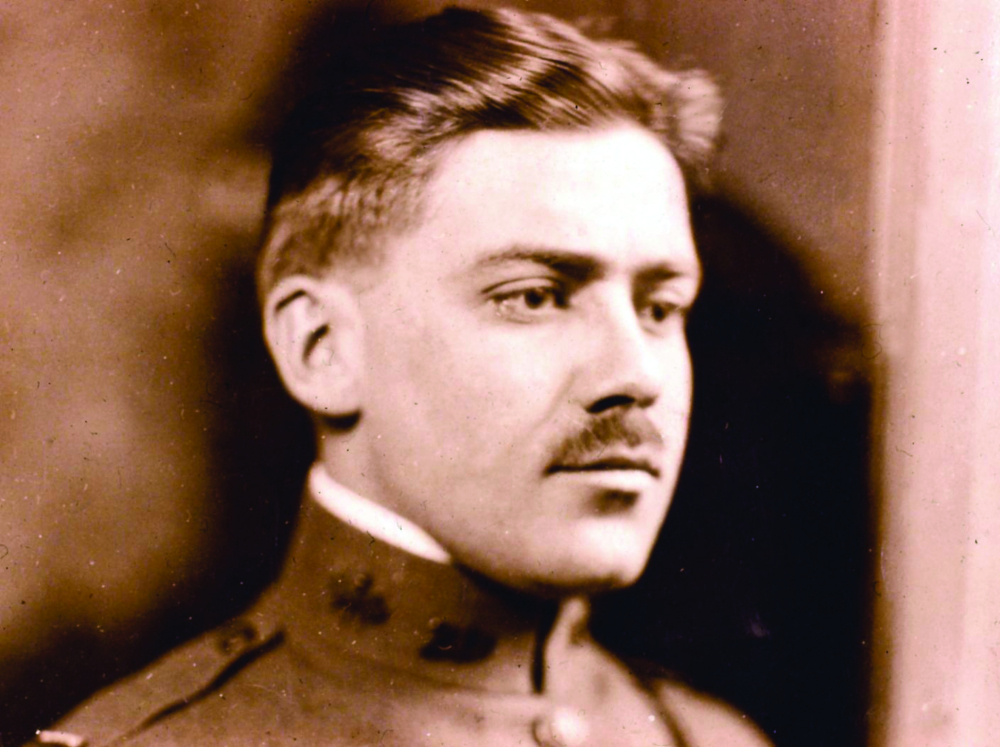
By virtue of his college education (even though he wasn’t a graduate), Norman Rauland was appointed an officer with the expectation that he would be sent to join the US AEF (Allied Expeditionary Forces) on the Western Front in the Adjutant Corps. It is not quite clear as to whether the Army made a misstep or whether Cadet Rauland instigated a change, but, rather than being assigned to the Adjutant Corps, he wound up in France attached to the US Signal Corps.
(It is tempting to speculate that Rauland and Irwin Armstrong [see “Industry Pioneers #6: Edwin Howard Armstrong: Developer of Practical Radio Broadcasting”]—who were fellow officers in what was a small cadre in the US Signal Corps, and who both were stationed in France at about the same time, and who both shared an interest in wireless radio—might have crossed paths. However, there is nothing in the record to substantiate that.)
Rauland served in the 82nd Division of the AEF without any dire effects and attained the rank of Captain before returning to the US in 1918 for discharge.
Prior to his military service, Rauland had met and been attracted to a young lady of Swedish ancestry named Florence. As young couples are inclined to do during wartime, they were married before his departure to Europe. The two enjoyed a happy married life, raised two daughters and were constant companions until Norman’s death at age 77 on April 1, 1975.
All-American Radio Corporation
After he was discharged from the Army, Rauland changed career direction. He decided to give up his pursuit of a career in law and seek his fortune in industry. He cast about for a year or so, during which time he worked for Belden in the coil-winding business. Still in the Chicago area, Rauland later struck out on his own. In 1920, he founded The All-American Radio Corporation,8 with one of the new company’s principal products branded the Rauland-Lyric line of audio transformers.
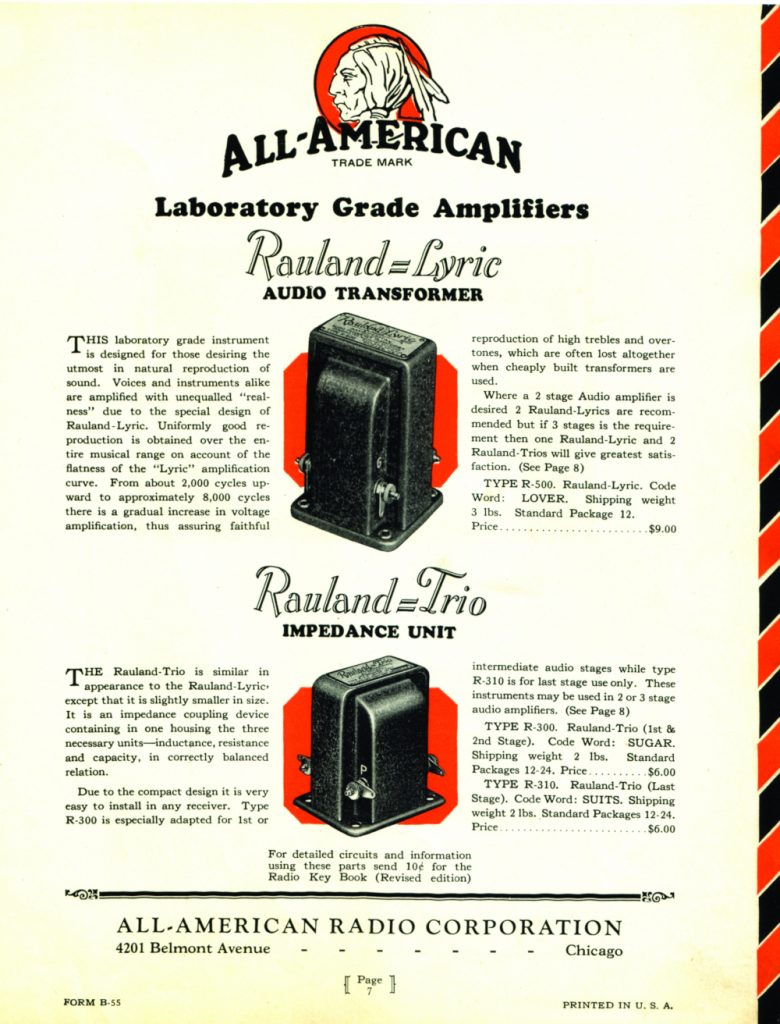
Rauland was, if nothing else, a grand visionary and a firm believer in the future of what was then a nascent radio industry. Invoices from the time showed that a fledgling little manufacturer of amateur radios called Chicago Radio Labs was an early customer for Rauland’s transformers. Chicago Radio Labs (CRL), founded in 1921, was another venerable entry into the radio business of the era. The firm eventually became known as Zenith Radio Corporation.9 Rauland formed an early friendship with one of CRL/Zenith’s founders, Eugene (Commander) F. McDonald, Jr. That friendship would come into play on many occasions over the years to come.
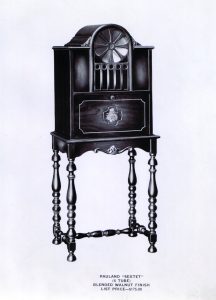
By 1924, the business of radio receivers for the buying public was booming. Rauland decided that he, too, might be able to cash in on the demand for radio receivers, and tooled up to begin manufacturing such devices. Another thread that lends credible evidence of Rauland’s (unconfirmed) ties to Armstrong was Rauland’s securing of a licensing agreement with RCA to use Armstrong’s patents for regenerative feedback in RF amplifiers. One of the stories that Rauland enjoyed telling related to how he came to be a licensee. Originally, one of the inducements to sign an agreement with Sarnoff was that only three license holders would be appointed. Then, as Rauland told it, “RCA decided to expand [licenses] to seven, then to 17, and finally to 27, before they limited it to two—those two being Democrats and Republicans.”10
By 1924, the business of radio receivers for the buying public was booming. Rauland decided that he, too, might be able to cash in on the demand for radio receivers, and tooled up to begin manufacturing such devices.
All-American Radio Corporation radio receiver sets were sold under various model names. But in all instances, they used Rauland-Lyric transformers. In advertisements for the radios, the transformers were touted as “the secret of tone perfection.” The top-of-the-line receiver was the Rauland Sovereign, which featured a hand-finished, ornate, furniture-style Spanish Renaissance cabinet and a seven-tube chassis. Price for the set in 1925 was $435 (in equivalent 2006 dollars, this would be about $4400). The cabinet had provisions for batteries and other power supply components; an All-American Constant-B battery eliminator sold separately for the sum of $37.50.11
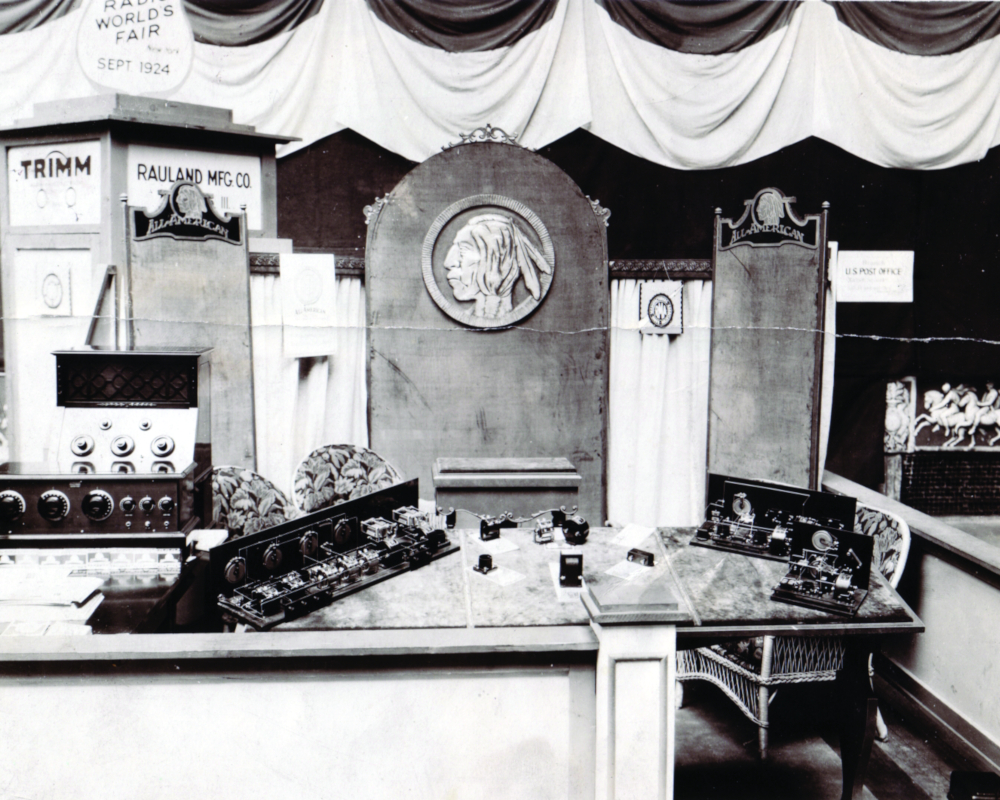
WENR: ‘The Voice Of Service’
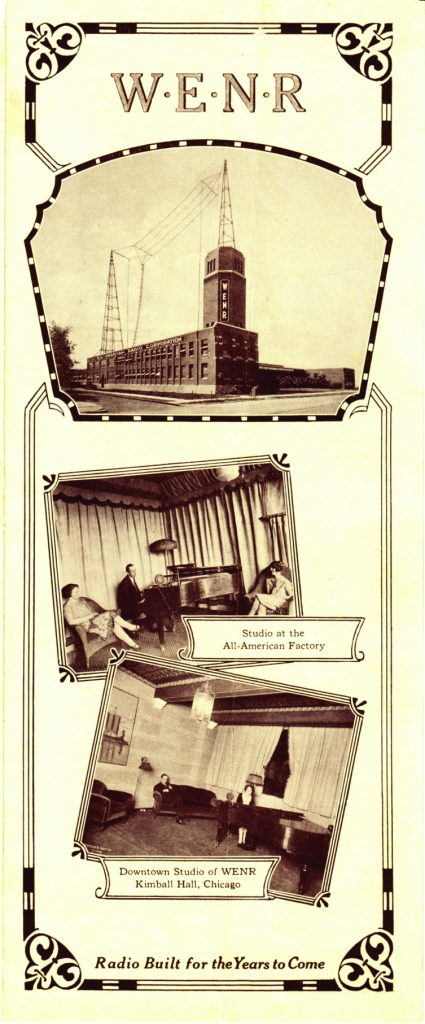
Rauland was intrigued by the potential power of radio as a communication tool. In 1924, he took steps that would prove the usefulness of the emerging technology as a commercial success that would enhance the marketing value of the medium. Starting with a modest, home-brewed 10W transmitter, he went on the air broadcasting on 1030KHz. The concept grew quickly, and by March of 1925, transmitter power was authorized to be upped to 100W. Rauland lent—with some assistance from his Signal Corps commander who was by then on the [pre-FCC] Washington regulatory board—his own initials “ENR” as the call letters for the station; hence, WENR was born.
With this increase of transmitter power to 100W, the station now could be heard throughout the Chicago area and into the surrounding states. At a time when radio advertising was practically nonexistent, Rauland oftentimes went on the air as his own announcer touting his All-American radios and his Rauland-Lyric transformers. He also liked to reminisce that his main advertiser at that point was a funeral parlor.
Rauland lent his own initials “ENR” as the call letters for the station; hence, WENR was born.
The benefits of radio “commercials” were beginning to be realized, and by the end of 1925, WENR put a Rauland-designed, Western Electric-built 1kW transmitter on the air, broadcasting from the All-American Radio Corporation’s manufacturing site in North Chicago. The station now could be heard with clarity from points as far away as Colorado and Pennsylvania.12
Rauland acknowledged that one of his better ideas, when it came to broadcasting, was realized in 1925, when he hired Everett Mitchell as station manager and chief announcer for WENR [see sidebar below].
In the spring of 1926, WENR commenced broadcasting “remotes” using a Rauland Company-engineered, less-than-10lb. portable transmitter to transmit orchestral performances from the LaSalle Street Masonic Temple. This type of innovation in its news department was a WENR hallmark; for example, the radio station’s late-breaking news coverage surrounding aviator Charles Lindbergh’s trans-Atlantic flight in May 1927 scooped all of the local newspapers, proving radio’s immediacy compared to the print medium.
WENR’s late-breaking news coverage surrounding aviator Charles Lindbergh’s trans-Atlantic flight in May 1927 scooped all of the local newspapers, proving radio’s immediacy compared to the print medium.
Rauland was delighted with the improvements that Mitchell had brought to WENR—and so were the station’s listeners. One member of the audience was so moved that he penned a poem that was published in the Chicago Evening Post. The last line read, “Your voice the service brings,” a line that inspired the station to adopt as its motto, “The Voice of Service.”
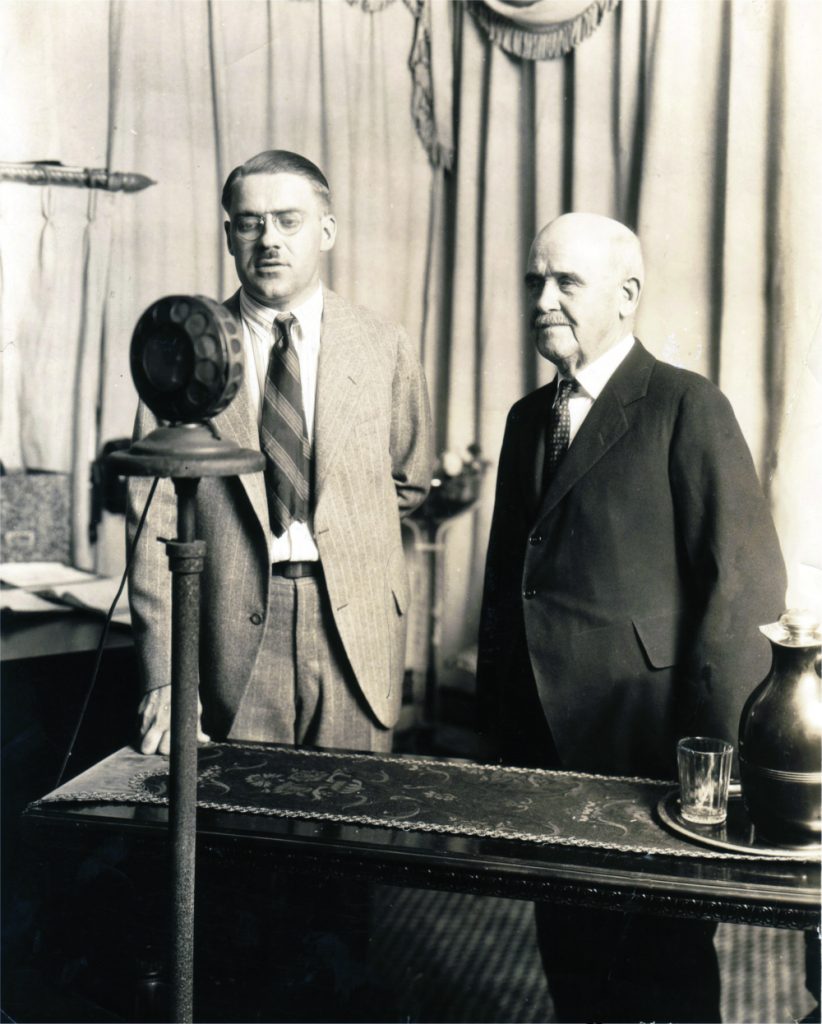
In October 1927, Rauland was approached by Samuel Insull’s Great Lakes Broadcasting Company, asking if WENR was for sale, and if so, for what price. Rauland responded in characteristic fashion by saying, “Everything I have is for sale, if the price is right.” In short order, a luncheon meeting was arranged, and a verbal agreement for the sale of WENR was consummated: selling price, $1.5 million.13
On April 17, 1928, E. Norman Rauland exited the broadcasting market. According to some sources, he then took a one-year hiatus before he acquired a partner and established The Rauland Manufacturing Company.
Radio To The Arctic
In 1925, an epic adventure unfolded as the MacMillan-McDonald Expedition14 set forth to probe the unknown furthest reaches of the Arctic regions. Not since the Peary excursion in 1908-09 had the United States mounted any serious efforts for additional exploration of the lands above 75° latitude. For the first time ever, the 1925 voyage used both radio and aviation in the quest to gain knowledge of the frigid northland. Indeed, radio played a significant role in making the expedition a success, and in several instances proved to be a life or death tether for the participants.15
In 1925, an epic adventure unfolded as the MacMillan-McDonald Expedition set forth to probe the unknown furthest reaches of the Arctic regions. For the first time ever, the voyage used both radio and aviation in the quest to gain knowledge of the frigid northland. The US Navy provided some logistical support for the expedition; however, the principal financial sponsor was the Zenith Radio Corporation.
The US Navy provided some logistical support for the expedition; however, the principal financial sponsor was the Zenith Radio Corporation. With due cause, Zenith is rightfully given principal credit for the undertaking. Zenith’s president Eugene McDonald led the charge on the Naval bureaucracy with regard to utilizing “short-wave” versus “long-wave” communications equipment for the excursion, pointing out that short-wave 40- and 60-meter radios would provide more reliable service—particularly in the northern latitudes. McDonald’s prognostications were succinctly borne out as the ships entered northern waters and sought to communicate with each other and with land-based stations in the lower regions of the Western Hemisphere.
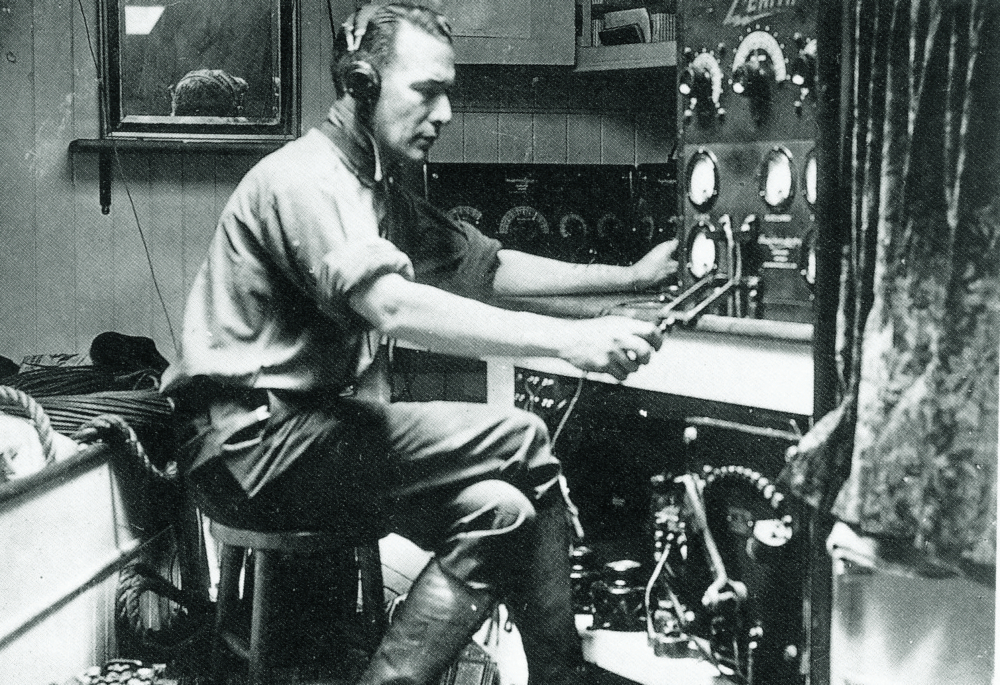
Without casting any aspersions on Zenith’s efforts, Rauland was, on occasion, given to comment that a goodly amount of components and some of the trans-receiver product engineering (if not some all-American shortwave radios themselves) of The Rauland Company accompanied McDonald’s communications equipment in the effort to reach the Pole. Considering the strong friendship between Rauland and McDonald, it would be highly unusual if the two had not actively collaborated on some joint efforts to meet this challenge.
Borg Connection
George Harvey Borg, the son of a hardworking Swedish carpenter, grew up in Moline IL, where he was put to work as an apprentice in a machine shop at a very young age. He had made his initial fortune through the development of a workable clutch mechanism for automobiles, and followed up his initial enterprise by consolidating his holdings in what today would be called the OEM sale of auto/truck components and “after-market” merchandise. His father was a hard taskmaster, and Borg learned early to be frugal and self-reliant. Never a speculator in the stock market, he predictably foresaw that the gyrations in the financial markets of the 1920s were headed for an abrupt fall.
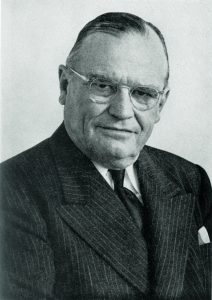
In 1928, much to amusement of his friends and associates, and against the advice of his financial counsel, Borg sold his market shares, assumed a polemical position and converted all his investments into cash. Consequently, when the market crashed just as he had predicted, he was one of the few businessmen in the United States who, owing to the liquidity of his assets, had a sizeable sum of cash at his disposal.16
In the late 1930s (the records are fuzzy as to the exact timing of the event), Rauland had a falling out with his business partner and found himself in dire need of ready cash. He went to see investment banker Paul H. Davis, an old friend and a fellow radio enthusiast. Davis also happened to be instrumental in the transaction that had formed the Borg-Warner Corporation.
Rauland laid his case before Davis: “I’m in a pocket,” he admitted. “My partner just gave me a buy-or-sell proposition. I don’t want to sell, and all my capital is tied up, so I’ll need help to buy…And ready cash seems to be pretty hard to come by.” Davis’ response was, “There’s one man who is certain to have the cash. He might be willing to finance you…And that’s George Borg.” An appointment was arranged quickly, and within the hour, Rauland was seated across the desk from George Borg.
Rauland laid his case before Davis: “I’m in a pocket,” he admitted. “My partner just gave me a buy-or-sell proposition.” Davis’ response was, “There’s one man who is certain to have the cash. He might be willing to finance you…And that’s George Borg.”
Borg knew practically nothing about the radio or electronics business. In fact, Davis had forewarned Rauland that “He probably doesn’t know a dial from a decibel.” True to form, Borg cut straight to the crux of the matter: “What’s the condition of your company? And what are your prospects?” Rauland presented his financial documents, and even though they were somewhat meager, they did show that The Rauland Company was solvent. As for prospects, Rauland was able to produce documentation attesting to the fact that the company had orders in-hand from the US government for $400,000 worth of communications equipment—not a shabby amount in the peacetime US circa 1939. Rauland laid out his proposition to Borg: “You buy out my partner’s half interest for $30,000 [and] lend the company $10,000, and I’ll put up an additional $10,000. With that, we’ll have enough capital to go ahead.”17
After a perfunctory tour of the Rauland plant the following day, Borg announced his decision: “I’ll go with you—drop by the office in the morning to attend to the details.”
When Rauland stopped by the next day, he was bewildered to find two checks made out to him personally: one in the amount of $30,000 and the other for $10,000. He stammered out an offer to sign a receipt. Borg waved his arm and responded, “If a man’s word isn’t any good, then his receipt won’t be, either.” With that, Rauland headed for his attorney’s office to complete the transaction. The attorney, A.L. Shapiro, was incredulous: “Do you mean to tell me he made out these checks to you personally and didn’t even want a receipt? Who is this guy? Santa Claus?” Rauland chuckled and replied, “That’s right, and he is.”18, 19
There isn’t a shred of evidence that the relationship between Rauland and Borg was anything other than amicable. When Rauland delivered Borg’s stock certificates, Borg told him, “It’s your show. Run it.”
World War II Years
With the European conflict raging and the prospects of America being dragged into the cauldron, military orders for ordnance escalated. On one occasion, Rauland called Borg to inform him, “We’ve just landed $2 million in government orders. We’re going to have to get a big, new plant.” Borg responded in a matter-of-fact manner, “Well, go out and buy one.”
It wasn’t until after the Battle of Midway that Borg ever got around to visiting the new Rauland plant. What he found was a modern, attractive manufacturing facility bustling with activity. He exclaimed, “Do you mean to tell me I own half of this?” To which Rauland replied, “You’re damn right you do.”
Between Pearl Harbor and VJ-Day, the total war output from The Rauland Company totaled an estimated $78 million.
The CRT Episode
Rauland had watched with interest as Baird Television in England perfected the cathode ray tube (CRT) that was to be so instrumental in the development of commercial television. On at least one occasion, he had visited England and personally met with a young Hungarian physicist named Dr. Constantin S. Szegho [see sidebar below]. Szegho was leading Baird’s efforts in CRT developments.
Again, Rauland’s connections served him in good stead, this time involving a New York attorney by the name of Paul Kolisch, who just happened to be the patent attorney for Baird TV’s American Division and also represented Rauland’s interests. Baird TV had opened a New York office to further develop and promote large-screen video-projection systems for use in cinemas. Wartime restrictions by the British government had curtailed these developments, and even though Baird TV had demonstrated a 20-foot-diameter video-screen image, American cinema operators faced staunch opposition from their unions and were slow to adapt to the new technology.20
In May of 1942, Rauland completed his purchase of Baird Television of America (aka Cinema Television Ltd.), and Dr. Constantin Szegho took up employment as director of tube engineering for The Rauland Company.
Realizing that Baird TV was stymied in furthering its developments of video-projection systems—at least for the duration of the war—and that the company was cash-starved, Kolisch recommended to Rauland that he seek an acquisition. Rauland seized the opportunity that would not only expand his company’s position in CRT manufacturing and video projection, but also bring him the services of Dr. Szegho. It was Rauland’s observation that Szegho was a man with whom he could work well and who would make a substantial contribution to his plans. In May of 1942, Rauland completed his purchase of Baird Television of America (aka Cinema Television Ltd.), and Dr. Szegho took up employment as director of tube engineering for The Rauland Company.
Adolph Schmidt joined The Rauland Company in 1941 as a technician in the Knox Avenue plant, where he was put to work testing tank radio transmitters. As Schmidt relates, “I was there to witness as they sectioned off a new space in the plant and started moving in some CRT and TV receiver apparatus. I was intrigued with these developments and quickly requested a transfer to the new department. Soon there were four of us: Dr. Szegho, a glass blower, a chemist and myself. We were responsible for setting up a production facility for development and manufacturing of CRTs.”21
Military Supplier
At the time, it looked like television might bow in via large-screens in cinemas prior to its acceptance as a home medium. Norm Rauland even went so far as to set up a demonstration theater to showcase 20-foot-diameter projected images. But, with the advent of US involvement in World War II, it appeared that The Rauland Company would be a military supplier—at least for the duration of the war.22
Rauland was determined to get a contract for providing radar display tubes. However, despite his many good connections in Washington, he was unable to secure the specifications for the P7 display tube to manufacture the device. In essence, Rauland was told that he would have to reproduce the tube using his own initiative. He set Dr. Szegho to the task.
During World War II, there really were two top US secret projects: One was, of course, the nuclear bomb, and the other was radar.
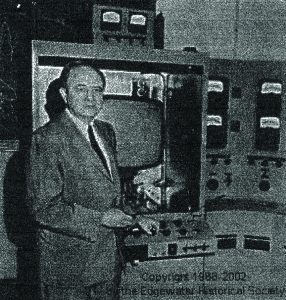
Development of CRTs for television was one thing; developing a CRT with sufficient “after-glow” for use in radar was a totally different story. Rauland was determined to get a contract for providing radar display tubes. However, despite his many good connections in Washington, he was unable to secure the specifications for the P7 display tube to manufacture the device. In essence, Rauland was told that he would have to reproduce the tube using his own initiative. He set Dr. Szegho to the task.
While Rauland literally paced the floor, Szegho explored the physics of fluorescent materials until, with a burst of sudden inspiration, he hit on the idea of a “cascade” screen, and a successful prototype appeared. Rauland and Szegho set out for Washington and astounded the military by presenting a near-exact duplicate of their “top-secret” P7 tube. Surprisingly, they didn’t both wind up in jail as subversives. Needless to say, The Rauland Company produced thousands of radar display tubes during the war. That wartime production set the stage for a transition to television picture tubes upon the cessation of hostilities.
Rauland and Szegho set out for Washington and astounded the military by presenting a near-exact duplicate of their “top-secret” P7 tube. The Rauland Company produced thousands of radar display tubes during the war. That wartime production set the stage for a transition to television picture tubes upon the cessation of hostilities.
Rauland also subsequently made another key decision that ultimately would work in his favor. Rather than launching a television receiver manufacturing business, he elected to maintain a position as an OEM supplier to all of the others that were crowding the marketplace with post-war TV sets. In addition to CRTs, the company also produced tuning condensers and other electronic assemblies. In this regard, one recognizes the influence of George Borg on Rauland, in the sense that Borg had followed a similar path in the automotive market.
Venturing Into Audio
The current-day management of the Rauland-Borg Corporation was kind enough to open its historical records for purposes of our research. While leafing through that documentation, an interesting piece of history unfolded. A catalog dated 1941, emblazoned with the logo “Webster-Rauland” came to light. At first thought, this seemingly pointed to some peculiar alliance between two companies that competed in the institutional (school) intercommunications market and the commercial sound business. Only after further investigation was it determined that the Webster referred to was not Webster Electric Company of Racine WI23 as first suspected, but the Webster Electric Company of Chicago.24
The referenced Catalog No. 141 was a 16-page, duotone piece that displayed an extensive line of audio amplifiers (including a six-input—four-mic, two-phono—60W unit with booster amps to up power to 240W), disk-recording/playback equipment, microphones, loudspeakers and like items. A disclaimer on the front page also was interesting, in that it stated “Manufactured under license with Electrical Research Products, Inc. [ERPI], subsidiary of Western Electric Co., Inc., and American Telephone and Telegraph.” ERPI was, of course, the predecessor of The All Technical Service Company (ALTEC). And, Altec used that designation until it acquired Lansing Manufacturing Company in 1939, at which time it became Altec Lansing Company. This gives rise to the supposition that the Webster-Rauland alliance occurred sometime prior to 1939.
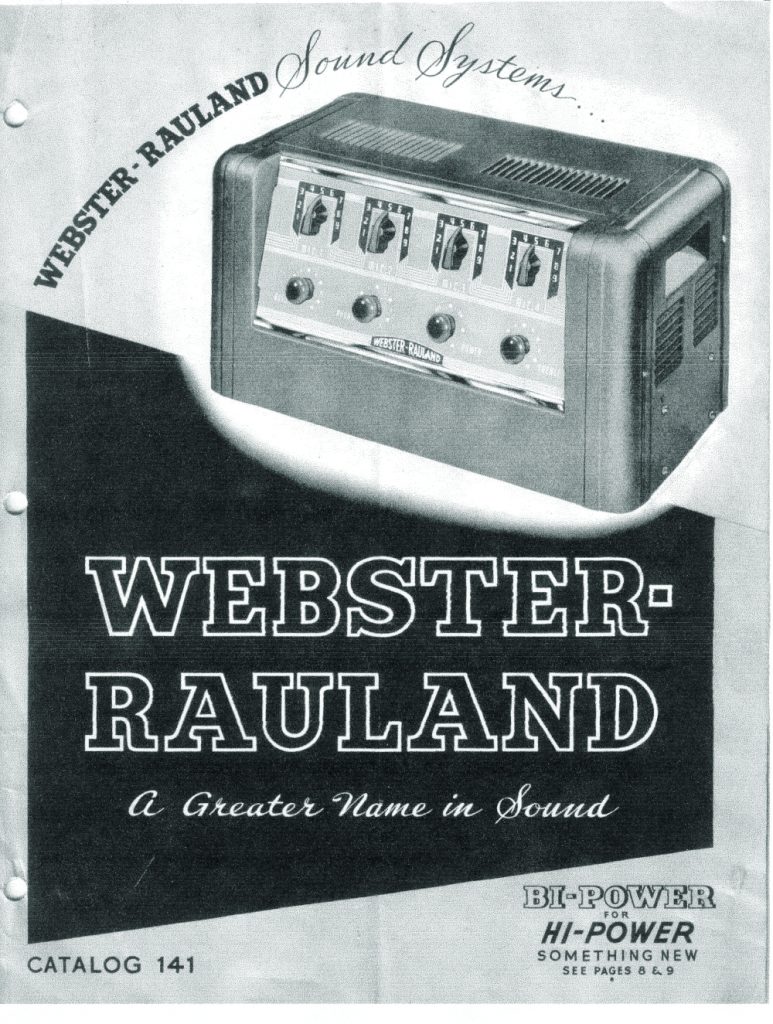
What prompted Norm Rauland to get into the intercommunication/commercial sound business remains a mystery. What is clear is that The Rauland Company initially formed an alliance with Webster Electric of Chicago and that, by 1942, it had acquired the intercom/commercial sound portion of Webster Electric.24 Robert Banks, who worked for Rauland at the time, confirmed that he was an active participant when the new division was established and production of Webster products was initiated at the (then-new) Belmont Avenue plant.25
The Rauland Company initially formed an alliance with Webster Electric of Chicago, and by 1942, it had acquired the intercom/commercial sound portion of Webster Electric.
Today, the Rauland-Borg Corporation is an active participant in the institutional communications, commercial sound and—by virtue of its financial interest in Biamp Systems (a wholly owned Rauland-Borg subsidiary)—sound-reinforcement markets. Management acknowledges that its heritage and accomplishments rest on the foundation set in place by Norm Rauland back in 1942.
End of An Era
In 1948, Norm Rauland was diagnosed with cancer. His doctors were skeptical that he would survive surgery, so he was advised to “put his affairs in order.” Clearly, he would have to divest himself of his business dealings. A number of television manufacturers had been trying to buy him out for years, but Rauland had steadfastly refused to sell, citing his fear that a buyer might not treat his employees fairly. Now faced with the inevitable, he placed a call to his old friend, Commander McDonald at Zenith, and asked him if Zenith would be interested in buying his company. McDonald answered in the affirmative, and the wheels were set in motion.
Rauland placed a call to his old friend, Commander McDonald at Zenith, and asked him if Zenith would be interested in buying his company. McDonald answered in the affirmative, and the wheels were set in motion. Zenith continued to operate The Rauland Company as a wholly owned subsidiary through 1968.
The Zenith/Rauland deal was completed within five working days, even though Zenith had to borrow 40% of the purchase price. Norm Rauland was proud of the fact that the First National Bank of Chicago advanced the money to Zenith and the deal was completed without any physical inventory. Everyone involved accepted the running statements as true, and waived an inventory evaluation. As far as his employees were concerned, Rauland stipulated that, with the sale to Zenith, all of his employees would retain the same seniority rights that they had at Rauland. The exact selling price was never disclosed formally, but it was widely circulated that Rauland had sold for somewhere in the neighborhood of $5 million.26
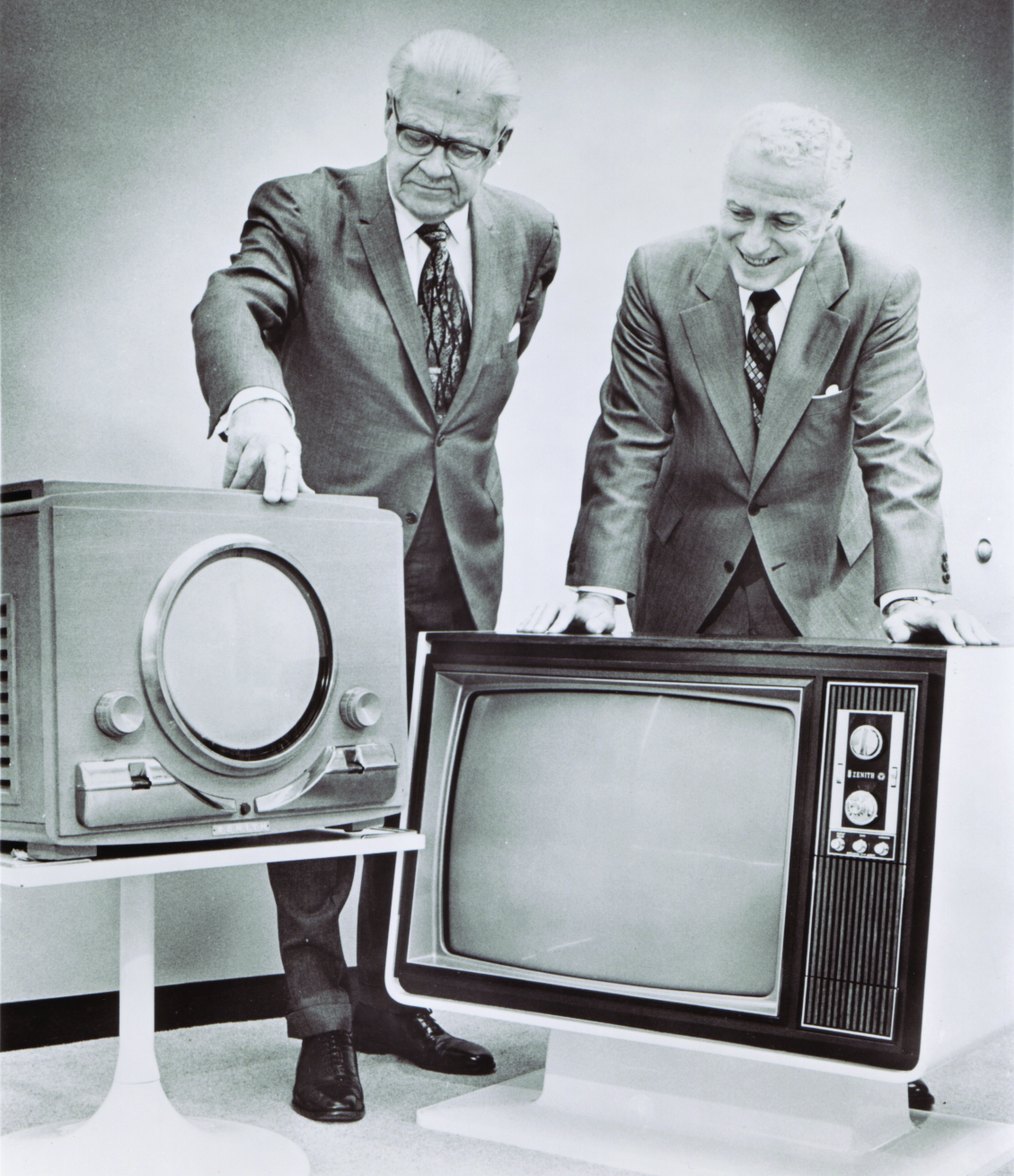
Zenith continued to operate The Rauland Company as a wholly owned subsidiary through 1968. Zenith, with good cause, firmly believed that, by selling CRTs and vacuum tubes branded Rauland, this would not disturb OEM agreements with other TV manufacturers that might have balked at buying components marked Zenith. Additionally, Rauland-branded tubes enjoyed good sales in the after-market as consumers “played tube jockey”27 at the local drug store.
The Phoenix Rises
Well, the long and short of it was that Rauland survived his surgery, outwitted his doctors and went on to live a reasonably healthy life for almost another 30 years. Enter, again, George Borg: Rauland’s old friend and business associate had visited the Phoenix AZ area on business, found the climate to his liking and had amassed some sizable real-estate holdings in the Salt River Valley. It was there on Borg’s ranch that Rauland went to recuperate.
After a year of basking in the Arizona sun, Rauland returned to Chicago. Never a man to sit idle, he started casting around for something to keep him busy. When he sold his interest in Zenith, he had, at McDonald’s insistence, retained the title of president of The Rauland Corporation and was an active member of the Zenith Board of Directors. Still, he felt he needed something more to keep him active. One of the caveats of the Zenith sale was that Rauland retained the option to buy back the small audio section if, and when, he desired.
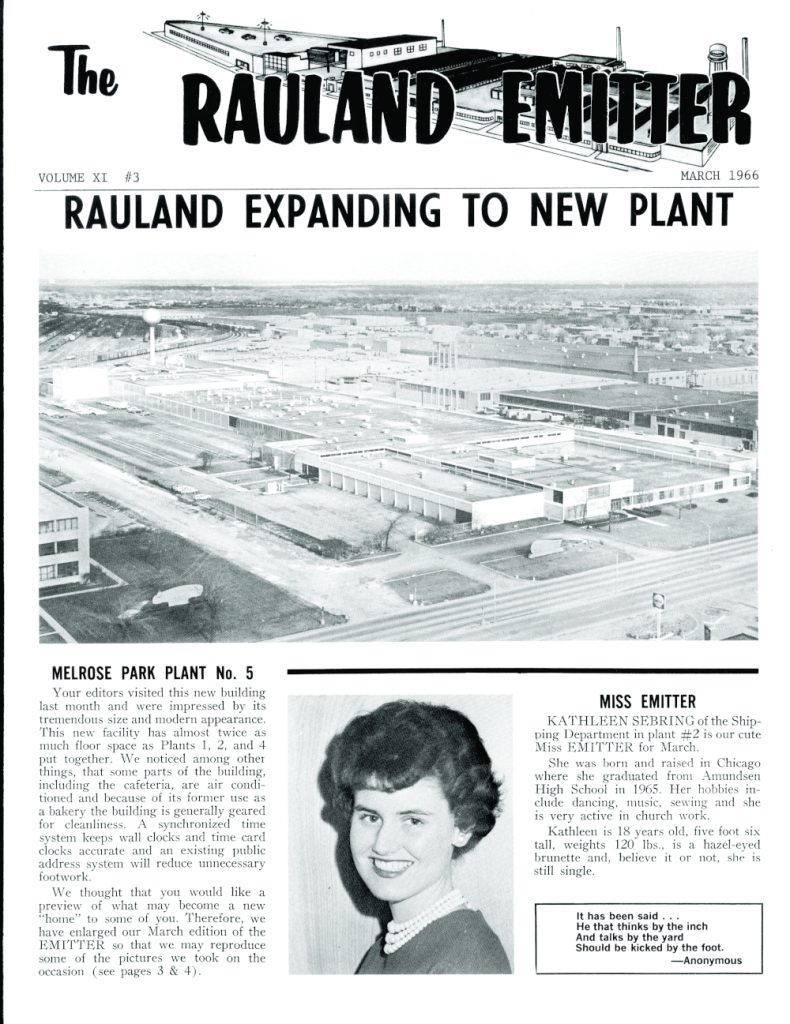
Whether it was for occupational therapy as some claim, or merely a rich man’s hobby as others suggest, Rauland exercised his option and bought back the audio portion from Zenith. However, he was precluded from using the name Rauland for his new enterprise. Again, the name Borg surfaced and, for a stipend, George lent his name to the new endeavor: The Rauland-Borg Corporation was founded. From all accounts, Zenith was fully supportive and provided him with the tooling and manpower necessary for the startup of the new operation.
Another New Beginning
Rauland-Borg in the earlier years (1950-1970) existed primarily on government contracts, private-label manufacturing and a dab of commercial business. One of the interesting tales to emerge from the government contracting side of the operation came out during the Vietnam era, when Rauland took a contract for building intercom amplifiers for use on military helicopters. The device in question was developed by RCA; however, when Rauland attempted to put it into production, it was discovered that it didn’t even come close to meeting the design criteria. A typical “catfight” broke out, resulting in some 26 change orders being issued in the span of 30 days. Rauland persevered, with the end result being a cost+redesign contract negotiated on a very profitable basis.28
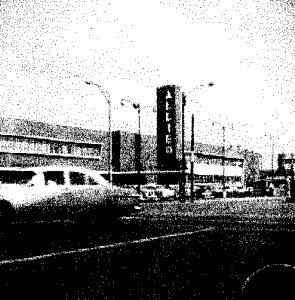
Allied Radio was another Chicago-based firm that had been around since 1931. Primarily, it was a “catalog” distributor of components, kits and finished goods sold under the “Knight” name. Rauland enjoyed many years of profitable business designing and manufacturing the Knight product line’s finished goods. This business dried up when Allied was sold to Tandy in the late ’60s and the buyer folded the Allied products into its RadioShack operation.
Rauland also was an early adopter of transistorized equipment. On one occasion, this cutting-edge design philosophy came back to haunt the engineering department: A solid-state consumer-grade stereo tuner/amplifier was developed for the Allied account. It was an unmitigated disaster inasmuch as the output stage lacked adequate short-circuit protection and the device failed in alarming proportions. To compound the problem, most of the units had been sold on a “90-day Free Trial” basis, and after the novelty wore off, buyers simply returned them for credit. A fix was applied, but relations with Allied were something less than cordial for a few months.
By the early to mid ’60s, Rauland decided that military contracting was becoming too cutthroat to be profitable; the company might have been a hobby as some suggest, but Norm Rauland was not one to tolerate activity that didn’t turn a profit. Hence, he withdrew from the government sector. The Allied account looked like it might be in jeopardy, and the influx of import products from the Far East made the future for producing consumer audio equipment stateside look grim.
Adapting To The Market
As the story goes, Rauland was out for a drive one Sunday afternoon and paid particular attention to the number of new schools springing up in the northwest suburbs of Chicago. The following Monday morning, he called everyone into his office and asked how many of those new schools were using Rauland-Borg equipment. The answer was none. The old Rauland Company had been a leading supplier of intercom equipment before World War II, but had fallen way behind its competitors by not keeping up with the changes that were shaping that marketplace. Distribution patterns were changing: While Rauland was selling primarily packaged goods through jobbers, the competition was shifting to selling modular systems to sound contractors.27
The marketing team at Rauland-Borg was convinced that digital switching technology was the wave of the future, and with Rauland’s acquiescence, work commenced on designing systems that would move school communications out of the dark ages. The result was the introduction of the first Rauland TeleCenter in 1970.
The attitude around the Rauland-Borg Corporation became “Let’s See What We’re Good At And Do More of It.” Rauland was not going to be satisfied just catching up to the competition; he was driven to seek innovations that would leapfrog available product offerings and leave the competition to play catch-up. School communication consoles hadn’t changed much in basic operation for 30 years. Admittedly, the internal components had been upgraded, but it was still the manual “select a switch, adjust knobs and push a button” function that had appeared in the 1930s.
Rauland strongly believed that any new product had to be markedly better than its predecessor or it wasn’t worth the time and effort. He simply didn’t believe in cosmetic changes just to have a new model to sell. As Carl Dorwaldt tells it, the marketing team at Rauland-Borg was convinced that digital switching technology was the wave of the future, and with Rauland’s acquiescence, work commenced on designing systems that would move school communications out of the dark ages. The result was the introduction of the first Rauland TeleCenter in 1970.29
Healthcare, Too
A similar attitude and drive was applied to the healthcare (nurse-call) systems business. Nurse-call systems had lagged way behind modern technology. Transistors had replaced vacuum tubes, but that was about it. Before his death, Rauland set the stage for the company’s entry into the healthcare market. Ultimately, in 1979, this resulted in the acquisition of hospital communication systems manufacturer Picker-Briggs (Cleveland OH), which also garnered some valuable engineering and market-savvy personnel. The Rauland “Responder” resulted.
The commercial sound and pro-sound reinforcement market also caught Rauland’s eye. Electronic products, i.e. new power amplifiers, mixers, equalizers and OEM arrangements with loudspeaker manufacturers, came into being. Without a doubt, Rauland is still grumbling in his grave that he didn’t live long enough to personally participate in the coming DSP and computer age.
Before his death, Rauland set the stage for the company’s entry into the healthcare market. In 1979, this resulted in the acquisition of hospital communication systems manufacturer Picker-Briggs. The Rauland “Responder” resulted.
At a time of life when most men would be content to reap the rewards of their fruitful endeavors, Norm Rauland still was to be found at the helm of his commercial enterprise and participating on a daily basis. Eventually, he started to realize he was not immortal and mellowed considerably, but not to a point where people would consciously cross him up or slacken in their effort.
After a full and active life, E. Norman Rauland passed away on April 1, 1975. Although a titan with an imperial presence, he would catch the unwary by complete surprise with his practical jokes. It was fitting that he died on April Fool’s Day.
Sidebar: Everett Mitchell (1898-1990)
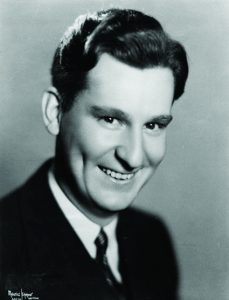
Everett Mitchell was a 25-year-old amateur baritone soloist who had appeared on several Chicago-area radio stations, including WENR. Rauland’s decision to hire Mitchell was based largely on several ideas that Mitchell had outlined to the young station owner (Rauland himself was only 27 years old at the time) over the preceding months, ideas that were designed to improve the station’s performance.
Immediately upon his appointment, Mitchell instituted a weekly schedule (an idea without precedent in the then-“free-wheeling” style of broadcasting); a reorganization of the station’s Staff Orchestra with the introduction of smaller “jazz,” gospel and classical content; and the formatting of regularly scheduled programs such as the Farmer’s Exchange and an informational program called Know and Boost Your United States. One of Mitchell’s more dubious innovations was the use of canaries to add singing accompaniment to musical programs; the idea quickly was adopted by other area broadcasters.
One of the problems the station faced was its location, about 10 miles removed from downtown. This meant that the amateur talent of the day (paid performers were few and far between) had to travel to the “burbs” to give freely of their talents. Mitchell arranged for WENR to move into the Kimball Building in the heart of the Loop. Rent was free, providing the station would announce where it was located and throw in an occasional promo for Kimball Organs. The arrangement was short-lived, owing to a leasing dispute. Within months, WENR found itself relocated into studios previously occupied by the defunct WSWS, located in the Strauss Building on South State Street.
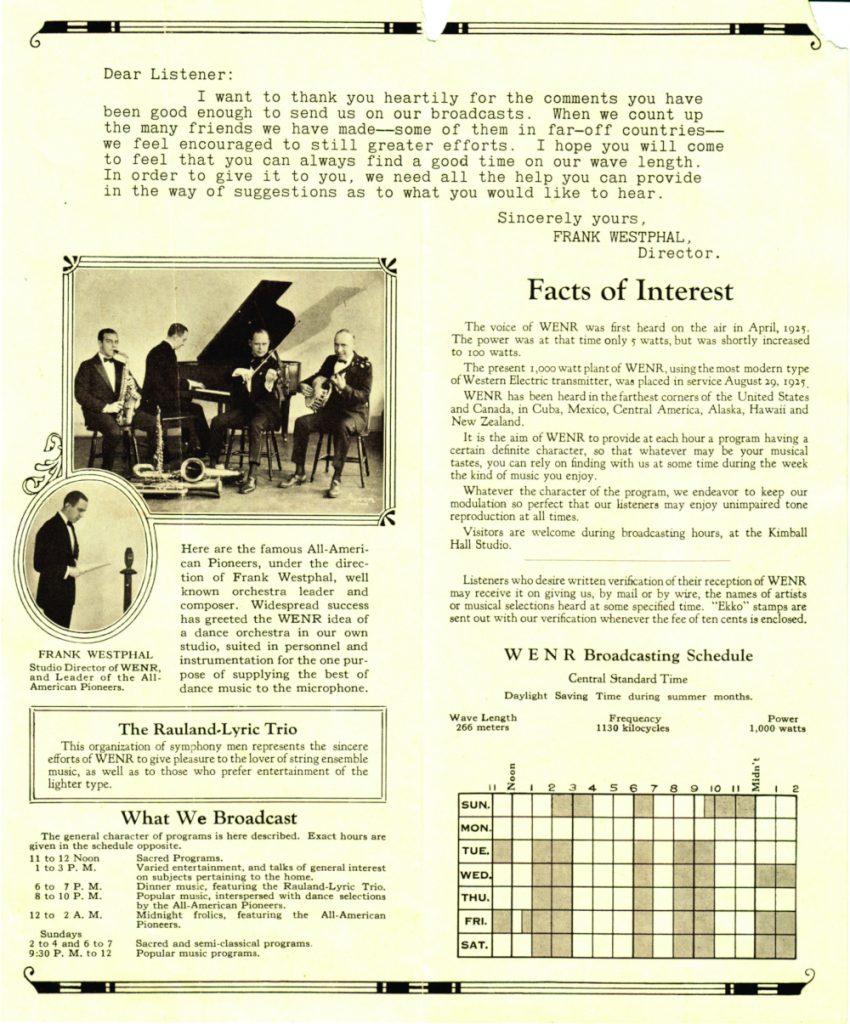
Mitchell enthusiastically described the new studios as being a first-class facility with a main studio large enough for a symphony orchestra, ample audience seating and a large Wurlitzer organ. One of the more notable “acts” that had its beginnings in this new studio was the husband-and-wife team of Jim and Marion Jordan, better known to countless audiences as “Fibber McGee & Molly.”
When Rauland sold WENR to Samuel Insull’s Great Lakes Broadcasting Corporation in 1928, one of the stipulations was that Everett Mitchell had to be part of the deal. And, a few years later when Insull, in turn, sold out to clear the way for NBC’s Chicago “Blue” channel, Mitchell’s services were retained. For years, he was the announcer for the network’s National Farm and Home Hour.
Mitchell retained his stature as a well-known radio talent in the Chicago area until he retired from broadcasting in 1967.30
Sidebar: Constantin S. Szegho (1905-1995)
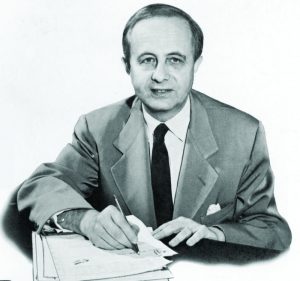
Constantin S. Szegho was born on March 15, 1905, in Nagybocksko, Hungary (now a part of Romania), and attended the Cistercian monks’ school in Pecs. After graduation in 1923, he enrolled at the Institute of Technology in Munich, Germany, to study electrical engineering and received his degree in 1927. For his post-graduate studies, he chose the Aachen Institute of Technology in Aix-la-Chapelle, Germany, from which he received his PhD in 1932. He came under the tutelage of Professor Rogowski, one of Germany’s foremost electro-physicists, and subsequently was awarded his DSc in 1933.
Being a Hungarian national, an Eastern European and with a parentage that could be construed as being Jewish, he was poorly received by the then-Nazi government. He, along with his first wife, fled from Germany to Scotland in 1934. It was there that he met John Logie Baird, who hired him and dispatched him to work in Baird’s vacuum tube laboratory in London. As war broke out on the continent, the British government seized all scientific work on cathode ray tubes for use by the military. Dr. Szegho, as a Hungarian national, was excused from conscription. Baird TV then sent him to New York so he could continue work on large-screen video-projection systems. This, too, came asunder when the British wartime government froze anyone from exporting capital abroad. Baird was stymied, and Dr. Szegho was devoid of a paycheck.
As the accompanying story relates, The Rauland Company bought the US subsidiary of Baird TV, and Dr. Szegho joined the Rauland engineering staff. He played a vital role in the development of CRTs for use in radar during World War II. After Rauland sold to Zenith, Dr. Szegho became that company’s VP of research, a post he held until his retirement in 1968.
Dr. Szegho and his colleagues were instrumental in making TV the large, rectangular, bright, colorful and well-defined image that we enjoy today. His interests also ranged far afield from TV tubes. Much of his library shows a keen interest in philosophy, literature, arts, music and politics. He died peacefully at home in the Edgewater District of Chicago on October 27, 1995, at the age of 90.31
Acknowledgements
Grateful appreciation is extended to Norm Kidder, CEO of Rauland-Borg Corporation, and the many members of his staff who provided information for this article. Likewise, Adolph Schmidt was a valuable source of information, particularly regarding the Rauland Tube Division; Schmidt was also kind enough to put me in contact with Elizabeth Szegho (Dr. Szegho’s widow), who opened her late husband’s collection for examination. And thanks to Carl Dorwaldt, whose long relationship with Rauland was the source of many of the episodes that Norm had related to him over the years, and who kept the record straight by reviewing my drafts for accuracy.
References
- For reasons best known only to him, Rauland was loath to use his first name, and from an early age adopted the use of his middle name. For purposes of this presentation, his wishes with regard to how he preferred to be called will be respected, i.e., E. Norman Rauland. To many of his close friends and associates he was known simply as ‘Norm.’
- The Rauland EMITTER, May 15, 1969. The Rauland EMITTER was an in-house publication of the Rauland Division of the Zenith Corporation.
- Ibid.
- Don’t look for the shop today. It has been long gone for many decades.
- As related by: Norm Kidder, CEO of Rauland-Borg Corporation and grandson of the company’s founder. Rauland was a rather stoic and unpretentious individual, and was not given to archiving records of his personal exploits.
- For an interesting and informative look at Scandinavian naming practices, refer to: Johan I. Borgos, Norwegian Naming Patterns: www.nndata.no/home/jborgos/names.htm. [Editor’s note: Link no longer active.]
- If this sounds confusing, it is—and it drives genealogists who attempt to trace Scandinavian family trees absolutely stark-raving mad.
- Rauland’s 82nd Division in France was nicknamed “The All-American” Division and he borrowed the nickname for his new company.
- Cones, Harold N and Bryant, John H. Zenith Radio—The Early Years 1919-1935, Schiffer Publishing Ltd., Atglen PA, 1997.
- Dorwaldt, Carl, personal correspondence with the author.
- McCluer, Paul (collector), The WENR-KYW Scrapbook Collection, Library of American Broadcasting, University of Maryland libraries, College Park MD 1971: www.lib.umd.edu/LAB/wenr2.html. [Editor’s note: Link no longer active.]
- Gager, E.H., “Some Facts About WENR—Largest Broadcasting Station in The West,” National Radio News, Washington DC, September 1928, pp. 14-15.
- Insull’s financial empire collapsed with the market crash in 1929. WENR was purchased by NBC as its Chicago Blue Network outlet; sold to newly formed ABC in 1943, and when ABC merged WLS with WENR in 1954, the call letters WENR faded into oblivion.
- The expedition is sometime (erroneously) referred to as “The Byrd Expedition.” Richard E. Byrd, USN, was one of several participants; however, Byrd seemed to have had the best press agent.
- Bryant, John H. and Cones, Harold N. dangerous crossing, Naval Institute Press, Annapolis MD, 2000.
- Casey, Robert J. Mr. Clutch–A Biography of George Harvey Borg, Bobbs-Merrill Publishing, New York NY, 1949.
- Casey, Ibid
- Casey, Ibid
- Casey does not provide a reference for the amusing quotes in the earlier story of Rauland’s encounter with Borg; hence, they must be considered somewhat suspect. A more “official” (or sanitized) telling was related by Rauland to the effect that, owing to the reluctance of the bankers of the time to lend money without personal indemnification by the company’s officers, and the refusal of Norman Wunderlick (Rauland’s chief engineer) to endorse such personal guarantees, Wunderlick sold his shares of The Rauland Corporation in December 1939 to George W. Borg.
- Much of the information relating to the Gaumont British/Baird TV/Cinema Television Ltd., negotiations and subsequent purchase by The Rauland Company are provided by courtesy of Dr. Douglas Brown—director, Strathclyde Science & Technology Forum, University of Strathclyde, Glasgow, Scotland. Dr. Brown is preparing a book, Images Across Space, based largely on his thesis, entitled “The Electronic Imaging of Baird Television,” 2000. Appreciation is extended to Dr. Brown for permission to use extracts from his forthcoming book.
- Author’s personal interviews with Mr. Schmidt.
- The Rauland EMITTER, December 1969.
- Webster Electric Company of Racine WI continued to be an independent manufacturer of intercom and commercial sound equipment (and a Rauland competitor) through the mid-1970s when it was bought by Raytheon.
- Webster Electric Company of Chicago subsequently was renamed Webcor and for many years thereafter produced wire-recorders and, later, magnetic tape recorders. Further evidence that Rauland and Webcor had a long relationship is a receipt dated 11/25/21 from the Webster Novelty Company issued to “All American Elec. Mfgs.” The invoice is for 4863 “stampings elec. steel parts” in the amount of $18.06. These parts were likely laminates for making transformer cores. The invoice is stamped, “The Webster Co. PAID” and Rauland noted on the invoice the name “Webcor.”
Contained in the Rauland-Borg archives is a financial statement dated 12/31/40, probably acquired by Rauland during his evaluation prior to acquisition of the firm. Interestingly, it reads, in part: “The Webster Co. was established in 1914 and added the Sound Division to its main activity of Tools, Dies and Stampings in 1928….Webster was one of the earliest pioneers in the field of designing and manufacturing equipment for the public address and later sound equipment for movie films, portable slide film projectors, industrial paging, inter-communication units, phonograph accessories, microphones. [Experience] has placed Webster-Chicago at the top of the field…” - Telephone interview with Mr. Banks by the author.
- Dorwaldt, Ibid. Dorwaldt was for several years VP of marketing for the Rauland-Borg Corporation. At this writing, he currently holds a marketing position with Renkus-Heinz.
- “Tube-jockey” was a derisive term that the industry bestowed on service technicians whose sole mode of testing receivers was the “swapping” of tubes.
- Dorwaldt, Ibid.
- Dorwaldt, Ibid.
- Wheaton College: www.weaton.edu/learnres/ARCSC/collects/sc14/bio.htm. [Editor’s note: Link no longer active.]
- Edgewater Historical Society, Obituary, Vol. VII No. 1–Winter 1996: www.edgewaterhistory.org/articles/v08-1-1.html.
This article was originally published in the April and June 2007 issues of Sound & Communications.
Click here for more of Sound & Communications’ “Industry Pioneers” series.
